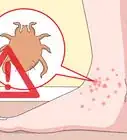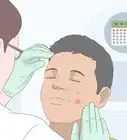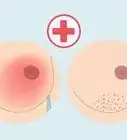This article was medically reviewed by Jennifer Boidy, RN and by wikiHow staff writer, Jennifer Mueller, JD. Jennifer Boidy is a Registered Nurse in Maryland. She received her Associate of Science in Nursing from Carroll Community College in 2012.
There are 8 references cited in this article, which can be found at the bottom of the page.
This article has been viewed 66,812 times.
You've resolved to exercise regularly, but every time you go for your morning run, you find your legs itching uncontrollably just when you're getting up to pace. It's a relatively common condition called runner’s itch that affects many runners. To stop your legs from itching, you need to find the cause. Finding the cause isn't always easy, but you should be able to identify your problem with a little trial and error. Then, you can resolve the problem and enjoy an itch-free exercise session.[1]
Steps
Finding Simple Solutions
-
1Change your detergent or fabric softener. Chemicals in the detergent or fabric softener you use may be irritating your skin. Even if you haven't had any problems before, when your skin is warm and you're sweating, you may have an increased sensitivity.[2]
- Switch to detergents and fabric softeners designed for sensitive skin, or that contain no dyes or perfumes. Typically you can find these wherever you normally shop for laundry supplies at the same price as the detergent and fabric softener you usually buy.
- Wash your workout clothes in hot water to eliminate any residual irritants left over from previous washings.
- If you try this and notice no difference in how much your legs itch, that doesn't necessary mean your old detergent or fabric softener wasn't to blame. The problem also could be a combination of several different causes.
-
2Wear different clothing. Even the softest cotton can irritate your skin once it gets sweaty. Wearing synthetic fabrics that wick sweat away from your body may help stop your legs from itching when you run.[3]
- You also may be wearing too much clothing. If you're too warm, your skin may respond by itching. When you dress to workout, keep in mind that your body will be several degrees warmer when your heart rate goes up.
- If you're running outside and it's cold, wear light layers that you can easily remove after you've warmed up.
- You also should be on the lookout for tags or seams. Something you don't even notice normally may be irritating your legs once the skin becomes warm and slightly inflamed from exertion. This is especially important if you're wearing running tights or more form-fitting long pants.
- If you're wearing shorts and your bare skin is itching, you can mark this (as well as a potential reaction to detergent or fabric softener) off your list.
Advertisement -
3Moisturize your skin. Especially in winter, the air is drier, which makes your skin drier. Particularly if you shower more than once a day, your dry skin may become irritated once you start sweating.[4]
- This is true regardless of whether you're wearing long pants or shorts when you run, although long pants or running tights may make the itching worse.
- Use a moisturizing, non-greasy lotion after your shower. You may want to reapply it about a half hour before you go for your run, if several hours pass between your shower and your exercise session.
- Look for an active moisturizer over a more cosmetic, scented body lotion. The latter will often run when you get sweaty, which can make your legs sticky and even itchier than before.
-
4Shave your legs. If you usually shave your legs, you'll need to maintain the habit if you want to stop your legs from itching when you run. Particularly if you're wearing long pants or running tights, the fabric may be rubbing against stubble, irritating your skin.
- If you've never shaved your legs (or if your legs are itching when you're wearing shorts), this probably isn't the reason your legs are itching. However, running tights or form-fitting running pants can still rub against your leg hair and cause itching, even if you've never shaved before in your life.
- Make sure you're adequately moisturizing your legs and using a specially formulated shave gel or lotion when you shave to protect against razor burn.
- Once you shave, if that solves your problem, you have to keep with it. Even day-old stubble can cause the itching to start again.
-
5Give it some time. In many cases, runners report their legs itch if they stop running for months or even weeks and then start up again, or if they are just beginning a running regimen after living a relatively sedentary lifestyle.[5]
- While medical and fitness experts aren't entirely sure why, your legs may itch when your body is unaccustomed to that level of physical activity. This may be because you have poor circulation in your legs.[6] If you are also experiencing pain along with the itching in your legs, then see a doctor as soon as possible.
- If you have recently started (or restarted) running, keep at it for a few weeks and see if the itching subsides. During that time, you can attempt to eliminate any other potential causes through trial and error.
- After you've been running for about a month, look at the possibility of a medical condition if your legs are still itching when you run.
-
6Move your run inside. If you normally run outside and your legs start itching, it's worth hitting a treadmill and trying to run inside to see if your legs still itch. This can eliminate the possibility that you're responding to something in the environment.
- If your legs don't itch when you run on a treadmill, the itching may be a result of an allergic reaction to pollen in the air or other environmental triggers. It also could be a result of the air temperature and humidity, or general air quality outside.
- On the other hand, if your legs continue to itch even when you run on a treadmill in a climate-controlled environment, you have at least eliminated environmental causes as the sole reason for your itching. Keep in mind they still may play a part.
-
7Shower less and use cooler water. Showering too frequently, for too long, or using very hot water may dry out your skin and cause itching.[7] If you shower more than once per day, try cutting down to just one shower per day, such as after you get back from a run. Keep the water at a warm, but not hot temperature. This simple change may help to prevent dry skin and reduce itchiness during your runs.
- If you swim frequently, then the exposure to chlorine may also be a cause of dry skin. Take a shower after swimming to rinse the chlorine off your body.
Exploring the Possibility of Allergies
-
1Take a non-drowsy antihistamine. When your body is injured or stressed, it releases additional histamine to the affected area. This increases blood flow to that area and assists with healing. However, it also can trigger an itching sensation.[8]
- You may find relief with an over-the-counter antihistamine drug. The brand doesn't particularly matter, but you may want to try more than one as you may find one is more effective for you than others. Keep in mind that some antihistamines, such as Benadryl, may cause drowsiness, and this may be unsafe for running since you need to be alert.[9]
- Never take more than the recommended dose or more than one antihistamine at a time, as it could cause drowsiness and other side effects. Take your antihistamine about a half hour before you plan to go for your run.
- If you find that over-the-counter antihistamines reduce, but don't eliminate, your itching, you may want to talk to your doctor about getting a stronger drug in prescription form.
-
2Stay hydrated. You lose a lot of moisture through your breath, as well as through sweating. Particularly in the drier air of winter, your itching may be a result of dehydration because you're not drinking enough water.
- Being dehydrated may contribute to your body's production of histamine, which could be the cause of your itching – especially if you don't have this problem during the warmer months or when you're running indoors on a treadmill.
- In cold weather, you may not feel much like drinking water. You don't necessarily want ice water (which will have a cooling effect on your body), but you do want to drink a glass of water 30 to 45 minutes before you go out running, and another when you're done with your run.
- If feasible, you also want to have a water bottle with you so you can drink water during your run – especially if you're running on a treadmill or going a long distance.
-
3Check for welts or rashes. If your itching is accompanied by redness, hives, or lesions, you may have exercise-induced urticaria. This is an allergic reaction triggered by exercise and typically controllable with medication.[10]
- If you have a history of breaking out in hives in response to stress or anxiety, you may be more likely to have this condition.
- Talk to your physician or to an allergy specialist if you believe you have exercise-induced urticaria. As this is a relatively uncommon condition, you may have to talk to several professionals before you get the help you need.
-
4Consult your physician. If your itching persists for more than four to six weeks and does not respond to over-the-counter antihistamines, or is accompanied by other symptoms, you may have a more serious medical condition.
- Gather information before your appointment, so you're prepared to answer your doctor's questions. You may want to measure your heart rate after 10 minutes or so of running, and take note of normal conditions when you go on a run.
- Be sure to tell your doctor of any acute causes, such as dry skin or a reaction to your detergent or fabric softener, that you believe you've eliminated.
- Keep in mind that finding relief for your symptoms still may involve a bit of trial and error as your doctor finds the right prescription or other treatment that will work for you.
Treating More Serious Problems
-
1Stop exercising immediately if you notice lightheadedness or difficulty breathing. Generalized itching, especially on your legs, may be a sign of a more serious disorder known as exercise-induced anaphylaxis. The disorder is rare, but can be fatal. If you stop exercising after the onset of symptoms, in most cases you should be able to recover without requiring immediate medical attention.[11] However, you should still see a doctor for diagnosis and treatment if you suspect that you might have this condition.
- Symptoms to watch for include lightheadedness, sudden loss of muscle control, a tightness or constricted feeling in your throat, and difficulty swallowing or breathing.
- Your symptoms may be relatively mild, to the point you can comfortably ignore them and continue your exercise. If they increase in severity, however, you should stop running. With mild symptoms, it's possible they will improve if you slow down and take a break, and you may be able to resume your run without any problems.
-
2Relax and stabilize your breathing. If symptoms require you to stop running, move to a protected area and set upright. Practice deep breathing and relax your muscles. In time, you should start to feel better.[12]
- Breathe in slowly through your nose, exhaling through your mouth. When your breathing feels regular, try to drink some water. Keep in mind symptoms may continue for hours after they began.
- If your symptoms seem to get worse even after you've stopped exercise, seek emergency medical attention immediately.
- Don't continue to run if you manage to stabilize and your symptoms seem to go away. You might try walking, but if you start running again so soon after an episode, the symptoms could quickly return with increased severity.
-
3Keep a diary of your episodes. Your doctor will need to know everything possible about your episodes, including everything you do in the hours leading up to your run. The more information your doctor has, the better able they will be to identify potential causes of your reaction.[13]
- Document where you run, the time of day, the weather (if you're running outside), and how long you had been running when you noticed the first symptom. Take your pulse, if possible, or at least make an attempt to estimate your heart rate or the intensity of your exercise.
- Take an inventory of household products and toiletries you commonly use, as well as everything you consumed before your run. Even if you've already eliminated possible allergies to these things, your doctor still may want this information.
- If you've recently changed soaps, detergents, or other products in an attempt to stop the itching, write this down as well, along with whether you noticed any relief after the change.
- Include details about what you were wearing on your run, and whether your skin felt unusually warm before the symptoms started.
-
4List your symptoms. Understanding the symptoms you have is important for your doctor to figure out how to treat your reaction. Write down everything as soon as possible after it happens, even things you think aren't really symptoms or aren't significant.[14]
- Symptoms can vary greatly, which not only means that many people remain unaware of their condition, but also that doctors lack the information to diagnose them properly.
- Generalized itching, particularly when accompanied by welts or hives, can be more common. A tightness in your throat and difficulty breathing or swallowing is a common symptom of anaphylaxis, but it may not be a symptom you have.
- Other symptoms include nausea, low blood pressure, sudden loss of muscle strength or motor control, fainting, lightheadedness, and headaches.
-
5Get tested for allergies. Exercise-induced anaphylaxis may be caused by a mild allergy you have to something else. This could include an allergy to shellfish, wheat, or any number of other food or drug products.[15]
- Your allergy may be so mild that you don't even realize you have it until you start exercising shortly after exposure to the antigen. Your increased temperature and heart rate as a result of exercise causes you to have an exaggerated reaction.
- However, you won't know if this is the cause unless you get tested for these common allergies.
- If allergy tests reveal the cause, you have a simple way to stop your legs from itching when you run – avoid exposure to whatever triggers an allergic reaction.
- Prescription antihistamines also may help you, but you'll need to talk to your doctor about which drugs are safe for chronic use.
-
6Work with your doctor. Exercise-induced anaphylaxis is a rare but serious condition, and episodes can be difficult to predict. If your doctor diagnoses you with this condition, you'll need to make arrangements so you can continue to run without endangering your life or well-being.
- Your doctor will teach you about preventative measures you can take to avoid another episode, and may instruct you to wear a med-alert bracelet. You also may need to carry an epinephrine auto-injector with you when you run in case you need to thwart an episode.
- If you are diagnosed with exercise-induced anaphylaxis, you should avoid exercising alone, even if your symptoms are controlled or you go for a long period of time without experiencing any symptoms.
- Keep in mind this doesn't mean you can never run again. Part of the nature of exercise-induced anaphylaxis (if that is your ultimate diagnosis) is that it comes and goes. You may have no symptoms for months or even years, and then suddenly have another episode.
References
- ↑ http://share.upmc.com/2015/03/prevent-runners-itch-save-workout/
- ↑ http://share.upmc.com/2015/03/prevent-runners-itch-save-workout/
- ↑ http://www.prevention.com/fitness/itchy-legs
- ↑ http://share.upmc.com/2015/03/prevent-runners-itch-save-workout/
- ↑ http://www.prevention.com/fitness/itchy-legs
- ↑ https://goaskalice.columbia.edu/answered-questions/itchy-legs-after-physical-activity
- ↑ http://www.mayoclinic.org/diseases-conditions/dry-skin/symptoms-causes/dxc-20248892
- ↑ http://www.healthcentral.com/diet-exercise/c/question/54379/45782/
- ↑ http://www.everydayhealth.com/drugs/benadryl
About This Article
If your legs get itchy while you’re running, try some simple solutions to feel better quickly. The chemicals in detergents or fabric softeners may be irritating your skin when you’re warm and sweaty, so switch to ones that are for sensitive skin and are dye and perfume free. You can also try wearing different clothes, like synthetic fabrics that wick sweat away from your body, or wear lighter weight clothes to keep cool. If you’re running in the winter or dryer months, moisturize your skin so it doesn’t get irritated. Showering for too long or using very hot water can also dry out your skin, so opt for cooler water and don’t shower more than once a day. For more tips from our Medical co-author, like how to know if allergies are causing your itchy legs, keep reading!


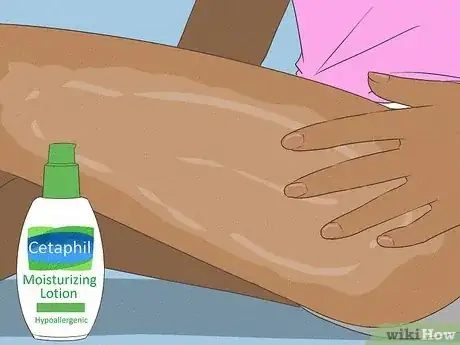
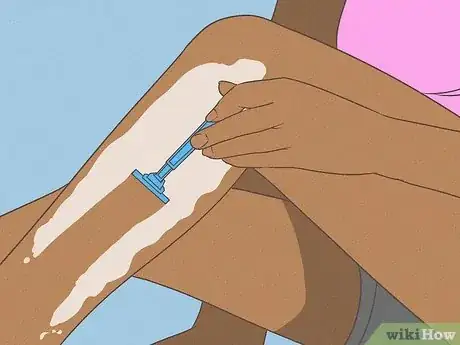
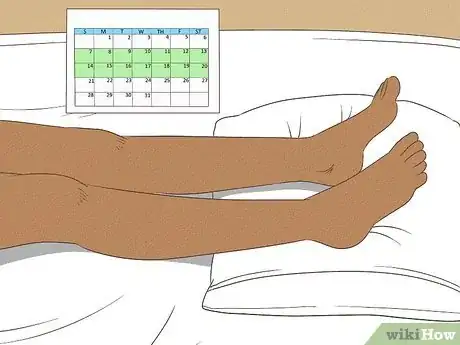

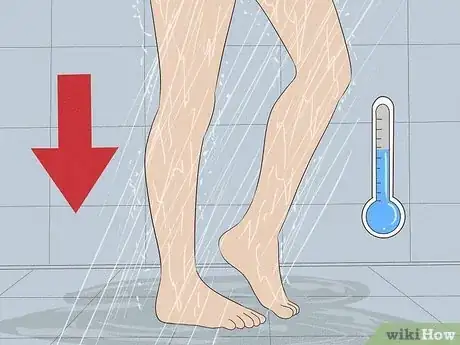
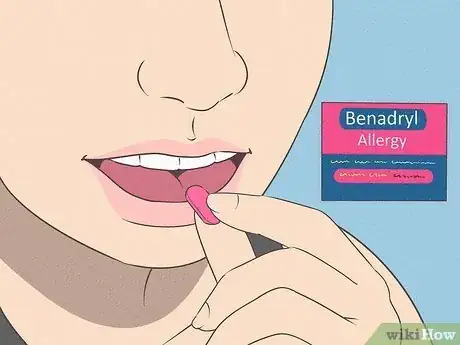
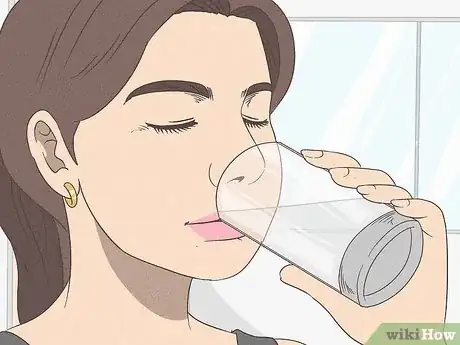
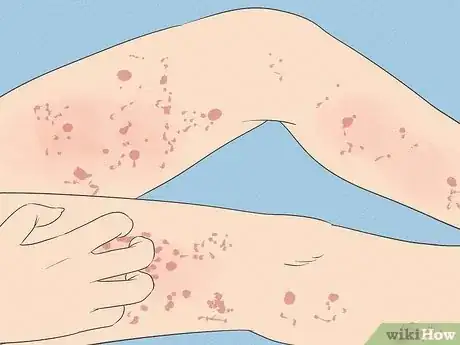

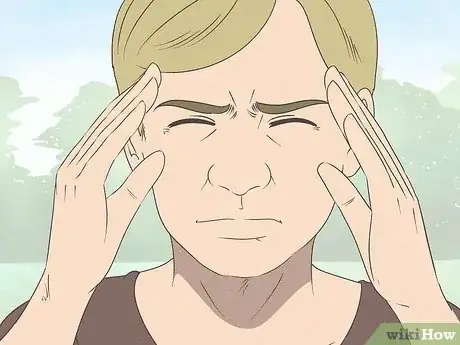
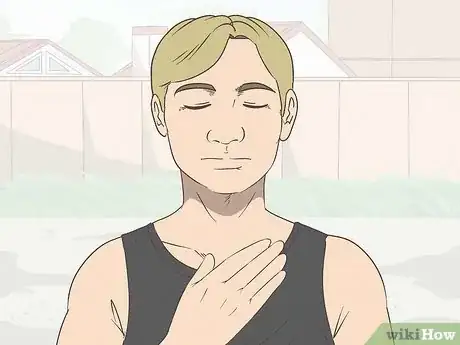

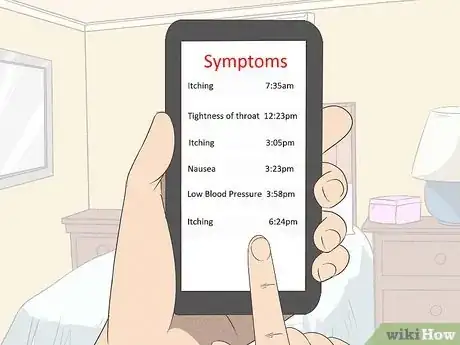
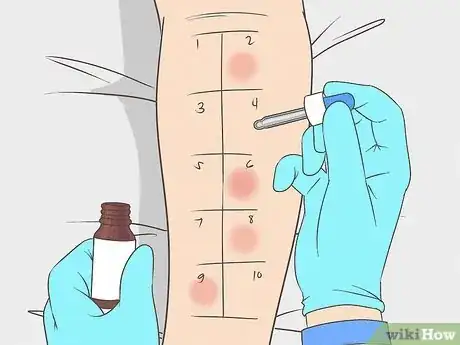

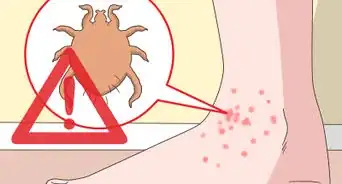
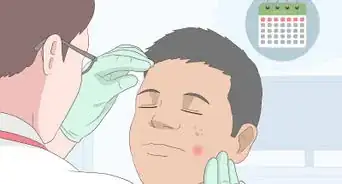





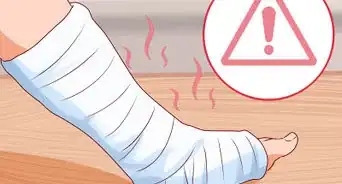

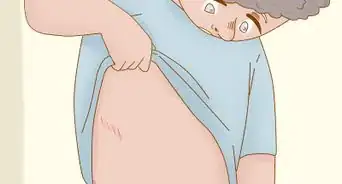


-Step-10.webp)








